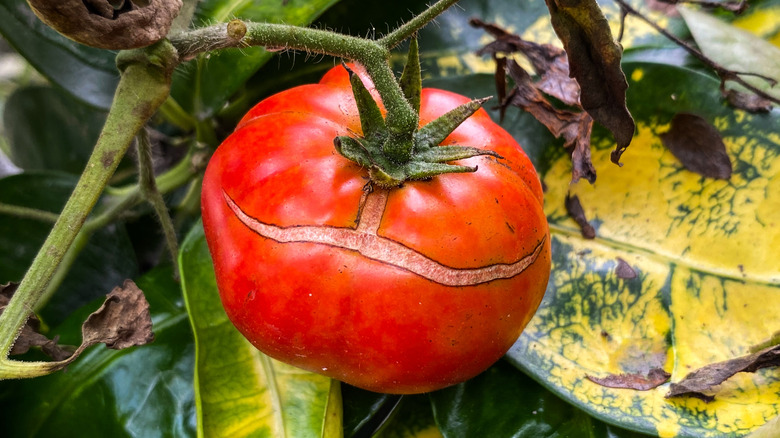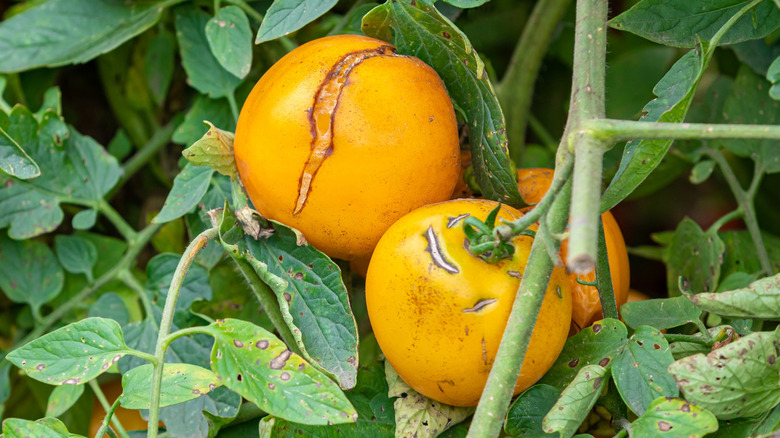Why Your Tomatoes Crack As They Ripen
Homegrown tomatoes are such a treat that Guy Clark went and wrote a whole song about them, and for good reason too. There's no food quite as depressingly mediocre as watery bland tomatoes from the supermarket, which are often picked well before they are ripe in order to survive long periods of shipping and storage. Growing your own tomatoes does require careful attention, however, and one issue that you are likely to come across at some point is the appearance of cracks around your precious red fruit.
Tomatoes split when they receive inconsistent amounts of water as they ripen. The problem is most likely to occur if the plants go through a long period with not enough rainfall followed by a heavy storm. The sudden influx of water causes the interior of the tomato to swell faster than the skin around it can grow. The force of the expanding insides causes the skin of the fruit to tear, creating cracks all over the surface.
The best way to prevent your homegrown tomatoes from cracking is to make sure they get an even amount of water as they grow. Consistent irrigation or watering by hand is necessary if the weather is dry, and you can add homemade compost to the soil to help it retain moisture. If you live in an area with extreme weather fluctuations, cover your tomato plants with a tarp to protect them. Most importantly, understand that cracks are not the end of the world for your tomatoes, at least, not usually.
Some cracks are more serious than others
Sudden surges in water levels can cause tomatoes to crack in two different ways. The first type of tearing is called concentric cracking. This is when the skin of the tomato splits horizontally, typically around the point where the fruit connects to the stem of the plant, creating concentric rings of cracks. Concentric cracking is generally a mild issue, as the cracks do not form deep enough to allow any pests or diseases to get into the flesh of the fruit.
The second type of cracking that occurs in tomato plants is radial cracking. This is when the skin of the tomato splits vertically from the stem down the side of the fruit. Radial cracking is much more serious than concentric cracking because these gashes tend to be much deeper, exposing the flesh of the fruit to bacteria, fungi, and insects, such as the tomato hornworm.
No matter what the type of cracking is, you should immediately pick any tomatoes that you notice have split. Leaving them on the vine with cracks in their skin can cause the fruit to rot. If you do notice any rot, mold, or sour odors from cracked tomatoes, don't eat them. Otherwise, cracked tomatoes are generally okay to eat.

